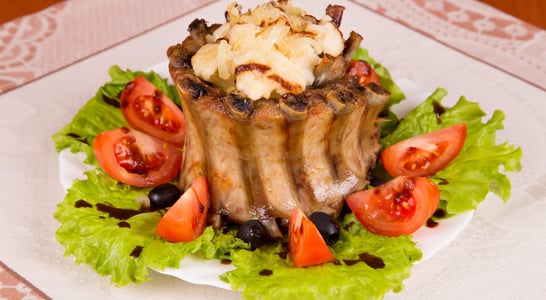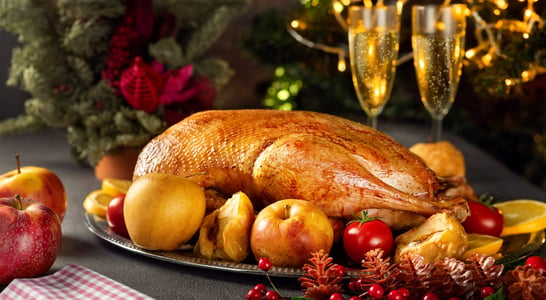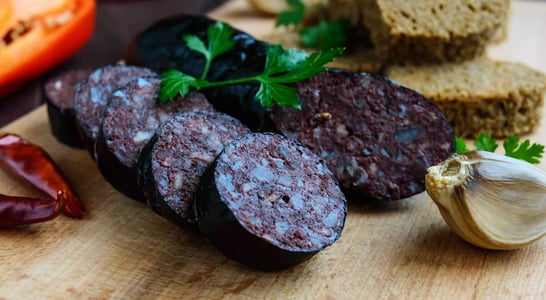
National Cassoulet Day
A French slow-cooked casserole loaded with savory meat, tender beans, and fragrant herbs - perfect for chilly nights.
Hot white beans baked with sausage and other meats, a cassoulet offers rich and warm comfort food on a cold winter’s day.
Those who are from France, who were raised in a French family, or perhaps who simply love French food will especially enjoy celebrating National Cassoulet Day!
History of National Cassoulet Day
Originally a food that was made and eaten by peasants, the French cassoulet is named for the pot that it is cooked in: cassole d’Issel.
The dish originated in the southwest region of France and, though it started out as a simple farmhouse meal, it has evolved over time to include flavors that are rich and complex.
Perfectly situated right in the middle of winter (at least for those in the northern hemisphere), National Cassoulet Day offers a deliciously hearty meal that is traditional and cozy. Though Parisian in culture, this event was actually founded in New York City by a French establishment called Benoit Bistro.
Some of the finest things in life come on a plate or in a bowl! And, in this case, it is a deep dish filled with beans, meats and all sorts of tasty flavors melded together.
So don that beret, let that mouth water for some delicious French cooking, and get ready to enjoy everything that is embodied in National Cassoulet Day!
How to Celebrate National Cassoulet Day
Have tons of fun and celebrate National Cassoulet Day with some of these ideas:
Enjoy Eating French Cassoulet
The first order of business on National Cassoulet Day is, obviously, to enjoy a large dish of it! Many restaurants that specialize in French food will offer a special menu of cassoulet especially in celebration of the day.
Whether there is a local French restaurant that is beloved, or if it requires a bit of a road trip to a nearby city, the results will surely be worth it.
Try Making Cassoulet at Home
Ingredients like a boneless pork shoulder, duck confit legs, salt pork, pork skin and chicken broth will get a person well on their way to making a delicious cassoulet at home!
Some people may find a traditional cassoulet recipe to be a bit fussy and time consuming.
Fortunately, a variety of more modern recipes are available on the internet that allow for shortcuts and cheats that taste good but allow cassoulet to be made in a much simpler manner.
Take a Trip to France
Of course, the most authentic way to pay heed to National Cassoulet Day would be to book and flight and head over to the land of romance, art and Ooh La La!
Taking a flight into Paris might be fun to see the Eiffel Tower and Notre Dame Cathedral, but don’t stop there.
To enjoy cassoulet fully, it would be the best idea to head down to the Languedoc region that is located in southwest France.
While there, find a local restaurant that offers cassoulet – and be sure to pair it with a delicious wine. Try a red wine that is medium-bodied and crispy, such as Marcillac, Madiran, Minervois and Corbières.
There’s no way to go wrong when spending National Cassoulet Day at home or in France!
National Cassoulet Day FAQs
Did cassoulet have any influences from other cuisines?
Yes! Some historians suggest cassoulet may have drawn inspiration from Middle Eastern stews.
During the medieval period, the Arab influence in southern France introduced fava bean stews, which share similarities with cassoulet’s slow-cooked, bean-and-meat foundation.
This blend of cultures likely shaped early versions of the dish.
What’s the story behind Cassoulet’s unique pot, the “cassole”?
The cassole, a terracotta pot, gives cassoulet its name. This pot style originated in Issel, France, where Italian potters introduced it in the 14th century.
Its sloping sides help the stew cook evenly, a key part of cassoulet’s slow-cooking tradition.
Similar pots, like the Spanish cazuela, were also used for stews in Spain and may have influenced the cassole.
What are the three main types of cassoulet in France?
Castelnaudary, Carcassonne, and Toulouse each have their own spin on cassoulet.
Castelnaudary uses pork and beans, Carcassonne adds partridge, and Toulouse includes its famous sausage.
These regional differences reflect the local ingredients and traditions, sparking friendly competition over which is “authentic.”
Are there any quirky legends about cassoulet?
Yes! One French story claims cassoulet began during a siege in Castelnaudary, when villagers combined all available ingredients to feed soldiers.
Some tales even say cassoulet pots were never fully emptied, with each batch building on previous flavors, creating a “perpetual stew”.
How long does traditional cassoulet take to cook?
Traditional cassoulet can take days to prepare. Beans soak overnight, the meat slow-cooked in duck fat, and the stew is baked for hours. Some chefs insist on stirring the cassoulet several times to achieve the perfect crust on top.
How did haricot beans become essential to cassoulet?
Haricot beans, now central to cassoulet, were introduced to France in the 16th century, as a gift from Italy’s Catherine de’ Medici.
She popularized them in French cuisine, leading to their eventual place in cassoulet. Before this, cassoulet used fava beans.
Is there an official cassoulet festival?
Yes! In Castelnaudary, the Fête du Cassoulet celebrates this dish every August.
Started by La Grande Confrérie du Cassoulet, it features tastings, music, and parades, honoring the dish’s heritage and regional pride.
What are some modern twists on cassoulet?
Chefs now experiment with cassoulet, adding ingredients like lamb, tomatoes, or breadcrumbs.
Some even create vegetarian versions. Cassoulet’s flexible nature lets it adapt to modern tastes while keeping its comforting core.
Are there any misconceptions about cassoulet?
Many think cassoulet is highbrow cuisine, but it started as a humble, rural meal.
This “peasant dish” provided sustenance for farmers, using accessible ingredients like beans and meats. Today, it’s celebrated for its rustic yet rich flavors.
Why does cassoulet taste better the next day?
Cassoulet’s flavors deepen over time. When reheated, the beans and meats absorb more of the herbs and spices, creating a richer, more intense taste.
Some even argue cassoulet is best after a second or third reheating.
See what else is happening…
There’s always more going on every month at Days Of The Year. Here are our favorites this month!
Also on ...
View all holidaysNational Word Nerd Day
Lexophiles rejoice! People who love words find joy in expanding their vocabulary, playing word games, and creating witty puns.
International Choreographers Day
International Choreographers Day is here to pay attention to and show appreciation for those people who help the rest of the world enjoy, share in and be entertained by dance.
National Law Enforcement Appreciation Day
Dedicated to safeguarding communities, these individuals uphold justice with unwavering commitment, embodying the essence of duty and honor.
National Balloon Ascension Day
Soaring high above the landscape in a wicker basket under a colorful canopy of air-filled wonder — an adventure like no other!
We think you may also like...
National Crown Roast of Pork Day
A magnificent culinary creation — a pork masterpiece that's as regal as it is delicious, fit for a feast to remember.
International Happy Goose Day
Savoring that succulent bird, with its rich, tender meat and a crispy skin, is like having a delightful culinary adventure!
National Black Pudding Day
Savoring blood sausage connects taste buds to rich culinary traditions, blending savory notes that captivate discerning palates.








